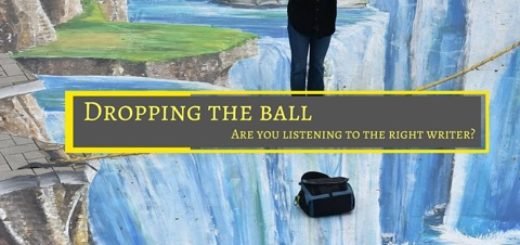Writing Dialogue: What You Say After Said by Kay Keppler
 Welcome to the next installment of craft posts by monthly guest columnist, Kay Keppler, on novel writing. Today she’ll help you with writing dialogue.
Welcome to the next installment of craft posts by monthly guest columnist, Kay Keppler, on novel writing. Today she’ll help you with writing dialogue.
You can contact Kay through the Writer’s Fun Zone or at kaykeppler AT yahoo DOT com to ask questions, suggest topics, or tell her she’s off her rocker. (She let me say that!)
***
Let’s get one thing straight: nothing is wrong with a character “saying” something. “He said” and “she said” are not only acceptable tags for dialogue—I’m going out to the end of the limb here—they’re the only acceptable tags. If you see what I mean, she said grimly.
Make the characters do the work
Dialogue is fun. You can write snappy or sad or vicious or heartbreaking dialogue as your characters feel their emotions. But when you write dialogue, you want to be sure that the emotion is in the words of the character, not the tag of the author. You don’t want to restate in your tag what is obvious to your reader.
“I hate what you did!” she said furiously.
Don’t use adverbs—that dreaded “ly” form that every writing teacher cautions you about—in dialogue tags. Your writing teachers are right. If your character (I’ll call her Echo) can’t say it in her own words—or worse, if she has said it and you’re repeating it for emphasis—just stop after “said.” If Echo said it like she meant it, that’s strong enough.
“I hate what you did!” Echo said.
“Said” as a tag is basically all you’ll ever need because it’s neutral. It disappears on the page. Readers don’t even see it. When you use verbs other than “said” to describe Echo’s words, two things can happen. First, a tag other than “said” can be redundant or silly. Which is poor writing and, again, will draw you out of the story.
“Let go of that dog!” Echo barked.
You can see why that’s bad. The second reason not to use any tag other than said is that any other verb stands out, making you notice, and taking you out of the story. Verbs not to use instead of “said” include murmur, whisper, whistle, gasp, cough, cry, interrupt, state, roar, and exclaim. I’m sure you can think of (I’m sure you’ve read) many others. One of my favorites is “explode.” (“Stay away from the bomb!” he exploded.)
Finally, you want to stick with a plain “said” because anything else is bad for your story.
“I can’t believe you did that!” Echo said in astonishment.
Telling your readers what your characters feel (and thus, what they should feel) is poor practice for several reasons. It’s redundant. Readers might not notice, or might not notice right away, but they’ll know something is wrong. They bought that book of yours—but will they buy the next one? And while readers might not notice this kind of redundancy, you can be sure that editors and reviewers will.
When you tell readers how Echo feels, moreover, you’re robbing your readers of the chance to bond with her. What readers want is the emotion, and they want to feel it with the characters you’ve created. You want them to feel the astonishment that Echo feels. So let Echo express her disbelief and show her astonishment. Give her a behavior that your readers will recognize.
“I can’t believe you did that!” Echo said, dropping her dipstick into the depths of her Porsche’s transmission.
Okay—perhaps your readers won’t have dropped a dipstick into their Porsche’s transmission. But by showing what Echo did, you also show how she felt—and that helps readers identify with her. Who hasn’t dropped something when they got big news? When Echo says, “I can’t believe you did that!” she could be angry, or happy, or disbelieving—or astonished.
And when you give Echo a small action, you build her character and at the same time create a dynamic that lets your readers identify with her. That dynamic is important, because if you tell readers that Echo is astonished, but Echo doesn’t do or say anything to substantiate that, you undermine Echo.
Tags: A necessary part of writing
Remember, the only reason we use tags at all is for clarity—to show who is speaking. Keep your tags to “said” and put your emotions in the dialogue. Your writing will be clearer, and your readers will thank you.
***
 Kay Keppler (www.kaykeppler.com) is an author (Zero Gravity Outcasts, Betting on Hope) and editor of fiction and nonfiction (Angel’s Kiss, Outsource It!) who lives in northern California. Contact her here or at kaykeppler@yahoo.com to ask questions, suggest topics, or if you prefer, complain.
Kay Keppler (www.kaykeppler.com) is an author (Zero Gravity Outcasts, Betting on Hope) and editor of fiction and nonfiction (Angel’s Kiss, Outsource It!) who lives in northern California. Contact her here or at kaykeppler@yahoo.com to ask questions, suggest topics, or if you prefer, complain.







[…] Writing Dialogue: What You Say After Said by Kay Keppler: Beth Barany […]